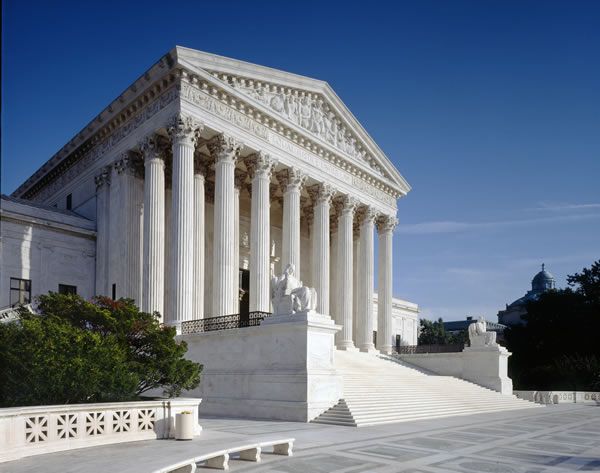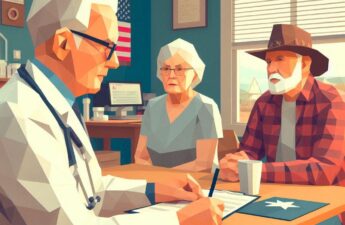
By Cassandra Jaramillo, ProPublica
In her eight years as a pediatrician, Dr. Lauren Beene had always stayed out of politics. What happened at the Statehouse had little to do with the children she treated in her Cleveland practice. But after the Supreme Court struck down abortion protections, that all changed.
The first Monday after the Dobbs v. Jackson Women’s Health Organization ruling was emotional. Beene fielded a call from the mother of a 13-year-old patient. The mother was worried her child might need birth control in case she was the victim of a sexual assault. Beene also talked to a 16-year-old patient unsure about whether to continue her pregnancy. Time wasn’t on her side, Beene told the girl.
“What if it were too late to get her an abortion? What would they do? And I just, I felt sick to my stomach,” Beene said. “Nobody had ever asked me a question like that before.”
Beene felt she had to do something. She drafted a letter to a state lawmaker about the dangers of abortion bans, then another doctor reached out with an idea to get dozens of doctors to sign on. The effort took off. About 1,000 doctors signed that letter, and they later published it as a full-page ad in The Columbus Dispatch.
Beene felt momentum building within the medical community and decided to help use that energy to form the Ohio Physicians for Reproductive Rights coalition. Now, Beene and the coalition are working to pass a citizen-led amendment to enshrine reproductive rights into the state constitution. The state’s six-week ban on abortion was blocked by a judge in October 2022.
Series: Post-Roe America:Abortion Access Divides the Nation
The group is a part of an emerging political force: doctors on the front lines of the reproductive rights debate. In many states, the fight to protect reproductive rights is heating up as 14 states have outlawed abortion. Doctors who previously never mixed work with politics are jumping into the abortion debate by lobbying state lawmakers, campaigning, forming political action committees and trying to get reproductive rights protected by state law.
In Texas, at a two-day court hearing earlier this month , women who were denied abortion care testified they were harmed by the state’s abortion ban. Two Texas doctors, who are plaintiffs, took the stand to testify about the chilling effect they say the laws have had on them. Dr. Damla Karsan, a Houston obstetrician, said she had never testified in a court case before but felt compelled to participate in this one to advocate for her patients and colleagues.
“I feel like I’m being handicapped,” Karsan said, referring to the Texas abortion law. “I’m looking for clarity, a promise that I will not be persecuted for providing care with informed consent from patients that someone interprets is not worthy of the medical exception” that would permit a legal abortion.
Although doctors’ groups have formed on both sides of the issue, most of these groups oppose abortion bans, largely because doctors worry that abortion bans could put their patients’ health at risk. Doctors now find themselves risking criminal and civil penalties in some states if they act to help patients who are suffering.
The Ohio coalition, along with its partners, gathered signatures for months in order to put the proposed constitutional amendment on the November ballot. The group filed more than 700,000 signatures on its petition, nearly twice the minimum number needed. The amendment’s language would protect several aspects of reproductive medical care, not just abortion: misscarriage care, contraception and in vitro fertilization.
“We see all those areas being negatively impacted by the Dobbs decision,” Beene said. “So we felt that by establishing that fundamental right to reproductive freedom, we would be able to protect all of those issues.”
In Nebraska, doctors formed the Campaign for a Healthy Nebraska PAC, which raised money to target key races, according to the Flatwater Free Press. The group also worked to get the Nebraska Medical Association to publicly oppose abortion restrictions, the news organization reported.
The Good Trouble Coalition in Indiana also mobilized medical professionals to work with legislators on abortion laws.
States including Michigan and Vermont have also used citizen-led ballot initiatives to get reproductive protections included in their constitutions, efforts that were supported by voters. In Michigan, doctors created a committee to help campaign for the proposal. Beene said the Ohio coalition modeled its strategy on Michigan’s approach.
In at least one state, doctors have rallied for a measure that would have limited abortion access.
In Kansas, a coalition of 200 physicians, nurses and pharmacists publicly supported an amendment to remove the right to an abortion from the state constitution, according to the Kansas Reflector. Voters ultimately rejected the amendment, with 59% voting against the initiative.
Mary Ziegler, an abortion historian and a law professor at the University of California, Davis, said medical associations have been involved in the abortion debate before, but the organizing efforts are broader this time, with several doctors’ groups throwing their support behind ballot initiatives that protect reproductive rights and draw widespread public support.
“It’s not a trivial thing that it’s a ballot initiative, because one of the other things we’ve seen is that voters are with them,” Ziegler said. “Doctors who are afraid of alienating potential patients or colleagues are realizing that bans are not popular with most people. So the risk may be lower than people thought of taking a stand.”
Beene prepared for backlash when she and other Ohio physicians came out against abortion bans. But she didn’t expect that lawmakers would try to change the rules needed to pass a citizen-led amendment just months after the coalition started to collect signatures.
Lawmakers in May passed a controversial resolution to raise the threshold needed for an amendment to pass from a simple majority to 60%. Voters will decide whether to adopt the proposal, known as Issue 1, in an Aug. 8 special election.
The Republican-controlled Ohio legislature passed a law last year banning special elections, citing their low turnout and high costs, but state lawmakers scheduled this August’s election despite the ban. Republicans have signaled that this vote on Issue 1 was aimed at blocking the reproductive rights amendment.
Jen Miller, executive director of the League of Women Voters of Ohio, a nonpartisan voting rights organization, said the group is against Issue 1 because it would overturn more than 100 years of precedent in the state for how citizen-initiated amendments are passed.
“What they’re trying to do is to trick voters into voting our own rights away in a low-turnout August election,” Miller said. “Even voters who never miss an election are unaware that there is an August special election.”
It’s possible that only a single-digit sliver of the population will vote — records from the Ohio secretary of state’s office show the 2022 August primary election had 8% voter turnout.
If Issue 1 is adopted, the reproductive-rights amendment would require approval from 60% of voters to pass in November, which Beene said she believes is what lawmakers want.
“They’ve sunk to tremendous lows and they’re doing everything they can to try to stop us,” Beene said.
ProPublica is a Pulitzer Prize-winning investigative newsroom.
Sign up for The Big Story newsletter to receive stories like this one in your inbox.

